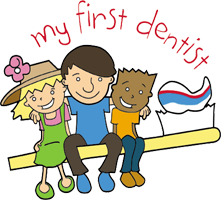For decades though, synthetic cathinones were less of a real problem in the U.S. and “more like a theoretical, scientific problem,” Glennon said. In the past four decades, Glennon has published more than two dozen papers and book chapters on cathinone, its effects and how it compares to other drugs. Soon after his paper was published, Glennon received a letter in the mail from a scientist at the Lensoviet Technological Insitute in St. Petersburg, Russia. What Glennon was calling methcathinone, the scientist told him, already existed in the Soviet Union. Methcathinone had sprung up as a major drug of abuse there in the 1970s and had increased tenfold in the eighties. Shortly after, a group from the National Institute for Drug Abuse (NIDA) visited Glennon’s lab.
- The khat plant is a shrub native to East Africa and southern parts of the Middle East; chewing its leaves produces feelings of euphoria and mild amphetamine-like effects.
- Knowing more about bath salts might have lessened the horror that Dickie Sanders battled in his final days.
- People experience withdrawal when they reduce or stop using a drug after continued use.
- You can have what is called “excited delirium.” If you have this, you will get dehydrated, your muscle tissue will begin to break down, and your kidneys may stop working.
Are bath salts illegal in the U.S.?
Overdose is the most common complication from the use of bath salts. The enduring high and extreme behavior may stem in part from the insidious combination of the compounds in bath salts. “But it’s worse than that,” says De Felice, who is beginning to study bath salts’ dopaminergic action in rats. Sold under names such as White Lightning, Cloud 9, or Ivory Wave, bath salts represent a category of illicit drug that typically contains combinations of various synthetic cathinones, including 3,4-methylenedioxypyrovalerone (MDPV), mephedrone, and methylone. People were abusing a synthetic cathinone in Russia and eastern Europe for several decades before the drug appeared in western Europe and the United Kingdom in the 2000s.
Legal status
In fact, he thinks ingesting bath salts is akin to knocking out the dopamine transporters altogether. It’s impossible to talk about bath salts without talking about dopamine — a natural neurotransmitter involved https://soberhome.net/adderall-and-cardiovascular-risk-a-therapeutic/ in the basic experience of pleasure. Chocolate, sex, gambling, nicotine, even the buzz of a smartphone in a pocket, all cause a rush of dopamine in the brain’s reward center, the nucleus accumbens.
Side Effects of Bath Salts
In April 2012, his lab and two others at VCU School of Medicine won a joint five-year grant from NIDA to synthesize the ingredients in bath salts and study the drug’s effect on brain transporters embedded in frog cells and in lab rats. They were determined to find out what it did to the brain and how, exactly, it produced such powerful effects. Bath salts are a category of synthetic drugs with stimulant-like effects.
Types of Drugs & Their Effects
Results of the study, which was funded by the National Institutes of Health, are novel in showing how MDPV affects the brain. “It produced an effect very similar to psychosis that happens in schizophrenia and other disorders,” drug overdose death rates national institute on drug abuse nida said lead researcher Marcelo Febo, Ph.D., an assistant professor in the UF departments of psychiatry and neuroscience in the Evelyn F. And William L. McKnight Brain Institute of the University of Florida.
An Addiction Medicine Pioneer
“He said, ‘Eureka, this is the active constituent of khat,’” Glennon recalled. “So we found ourselves in possession of a lot of the early pharmacological data on this. Bath salts were easily https://sober-house.net/awareness-and-health-observances-observances-drug/ accessed at low cost at U.S. smoke shops and even gas stations prior to 2011, when they were outlawed in the United States, but they continue to be readily available online and elsewhere.
Similar to MDMA, MDPV is metabolized by O-demethylenation, thereby producing the ring-hydroxylated metabolites, 3,4-dihydroxypyrovalerone and 4-hydroxy-3-methoxypyrovalerone (Meyer et al., 2010; Strano-Rossi et al., 2010; Anizan et al., 2014). 3,4-Dihyhdroxypyrovalerone is a potent blocker of DAT and NET (Meltzer et al., 2006), so this metabolite could contribute significantly to the in vivo pharmacology of MDPV. 4-Hydroxy-3-methoxypyrovalerone is a long-lasting metabolite that may prove useful for forensic validation of MDPV exposure in human subjects (Anizan et al., 2014). Whether methylone and MDPV display nonlinear kinetics similar to MDMA is an unresolved issue that warrants investigation.
De Felice and his research team began to test the basic elements of bath salts — the same chemicals that had been found in Dickie Sanders’ blood. Mephedrone, they found, seemed to act like amphetamine, causing an excessive surge of dopamine from the cell. That was no surprise, since the molecules are structurally similar. They act as strong stimulants and may be sought by a person who normally uses cocaine or methamphetamine.
And cathinone, an alkaloid derived from east Africa’s khat plant, has been chewed by people for hundreds of years for its stimulant effect. On July 26, the Drug Enforcement Administration announced that it had seized more than five million packets of synthetic drugs and arrested 90 people in a nationwide crackdown called Operation Log Jam. Of the drugs seized, 167,000 packets and ingredients to make an additional 392,000 products were synthetic cathinones.
The raid also targeted another class of synthetic drugs known as synthetic cannabinoids or synthetic marijuana, commonly called K2 and Spice. The chemical composition of bath salts can vary widely, producing a range of drug affects—both short and long-term—from using bath salts. The National Institute on Drug Abuse (NIDA) reports that MDPV, a common synthetic cathinone found in bath salts, is ten times more powerful than cocaine, is very similar to Ecstasy in how it makes the user feel.

